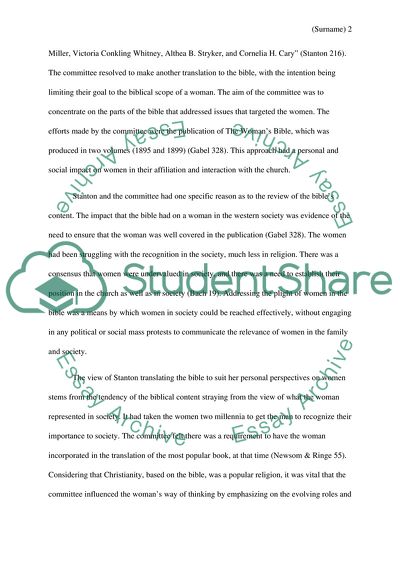Cite this document
(“Elizabeth Cady Stanton and the creation of her bible Research Paper”, n.d.)
Elizabeth Cady Stanton and the creation of her bible Research Paper. Retrieved from https://studentshare.org/religion-and-theology/1666672-elizabeth-cady-stanton-and-the-creation-of-her-bible
Elizabeth Cady Stanton and the creation of her bible Research Paper. Retrieved from https://studentshare.org/religion-and-theology/1666672-elizabeth-cady-stanton-and-the-creation-of-her-bible
(Elizabeth Cady Stanton and the Creation of Her Bible Research Paper)
Elizabeth Cady Stanton and the Creation of Her Bible Research Paper. https://studentshare.org/religion-and-theology/1666672-elizabeth-cady-stanton-and-the-creation-of-her-bible.
Elizabeth Cady Stanton and the Creation of Her Bible Research Paper. https://studentshare.org/religion-and-theology/1666672-elizabeth-cady-stanton-and-the-creation-of-her-bible.
“Elizabeth Cady Stanton and the Creation of Her Bible Research Paper”, n.d. https://studentshare.org/religion-and-theology/1666672-elizabeth-cady-stanton-and-the-creation-of-her-bible.


